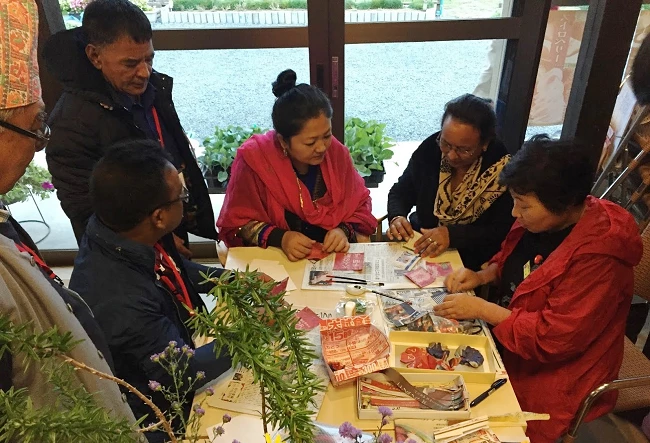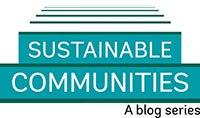
(Photo: Margaret Arnold / World Bank)
Ibasho: a Japanese approach to community resilience
In Ofunato, elder community members planned and built the Ibasho Café, which serves as a hub to restore the fabric of a community badly damaged by the GEJE disaster. Ibasho Café is an informal gathering place that brings the community together. All generations connect in that space, with children coming to read books in the English library, older people teaching the young how to make traditional foods, younger people helping their elders navigate computer software, etc. With the elderly actively engaged in the operation of the Ibasho café, the place helps build social capital and resilience, while changing people’s mindsets about aging. The café runs as a sustainable business and, over time, has developed a noodle shop, an organic farm, and a farmers market to further support its operation.
In 2014-2015, GFDRR supported the documentation of the Ibasho experience in Japan. Learning about this experience, Santoshi realized the elders and women of her community could also lead the way, and reached out to Emi Kiyota, head of Ibasho, the NGO that facilitated the process in Ofunato.
Learning and sharing with Nepal at community and government levels
Now, with support from GFDRR's Japan-World Bank Program for Mainstreaming DRM, Ibasho works with community elders, women, and people with disabilities in Matatirtha, Nepal, to develop Ibasho-Nepal as part of their earthquake recovery efforts.
This October, a group of representatives from Matatirtha visited Japan, as part of a peer-to-peer exchange, to learn from the Ofunato elders. The delegation included five community members elected to represent them on the visit and four invited representatives from the Nepalese government, which is developing a project to support the psycho-social recovery of earthquake-affected communities.
Over four days in Ofunato, the group visited temporary housing communities, reconstructed public housing, and a fisheries cooperative to learn about the recovery process since GEJE. Most importantly, they spent a lot of time at the Ibasho café, interacting with its members to understand how they developed and operate the space, the different livelihood activities they support, and the role the café plays in supporting the psycho-social recovery and resilience of the community.
The Ofunato elders showed the Nepali community leaders their methods for organic farming, and how to make paper crafts they could sell at Ibasho-Nepal. The Nepali representatives made a presentation on the activities they are developing in Nepal, and received feedback from the Ofunato elders and Nepalese officials. Both groups shared personal stories of how they and their communities were affected by the respective disasters, and how they are overcoming loss to build more resilient communities. They also shared plenty of laughter, songs, and good food.
Takeaways for community leaders and the World Bank
Reflecting on what they learned from the visit, community leader Pancha Kumar Shrestha said, “We know we can overcome this disaster because we have now seen others do it.” In addition to the practical skills they learned, the community leaders also shared that the visit showed them how much more they can achieve by working collectively, and that “everyone has something to contribute, including the elderly, and people with disabilities.”
Working with GFDRR’s Inclusive Community Resilience program and the World Bank DRM Hub, Tokyo, the Ibasho Café initiative also aims to share their approach with communities in the Philippines and other countries.
In our work at the World Bank, we tend to think of peer-to-peer learning as government representatives learning from government peers in other countries. This visit demonstrated the importance of connecting communities to other communities that have been through similar experiences. The Nepali elders left feeling inspired, empowered, and connected to people that understood exactly what they had been through and what they could achieve. The bonds between the Matatirtha and Ofunato elders are strong, and as Ibasho-Nepal takes shape, the community members will continue to draw on the lessons and inspiration they gained from their friends in Ofunato.



Join the Conversation